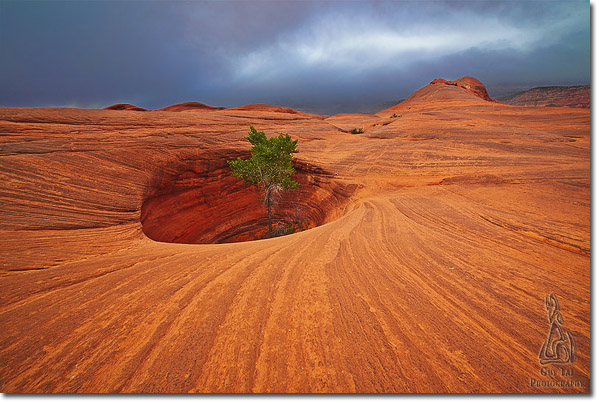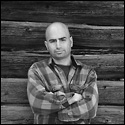The Essential Landscape: |
I recently got myself into some hot water after suggesting that many viewers don’t really care about the “hero stories” that often accompany nature images. I was, in fact, referring specifically to the artistic merit of nature images and the impressions of viewers other than photographers. While these anecdotes certainly provide entertainment value, my contention is that they do little for the acceptance of nature photography as a fine art and for the reputation of the photographer. There is a reason why art galleries and museum exhibits promote themselves very differently from extreme skateboarding events or monster truck rallies. Undoubtedly, both finesse and entertainment have their place and are useful in their own way, but each of us should think very carefully about the stories we tell about our work, how we present ourselves, whom we wish to impress, and in what ways.
Stories play a vital role in our work and lives. Our images tell stories and our stories are reflected in our images. In my teachings I place great emphasis on articulating, in actual words, the story behind each image, as a way of forming a closer connection with the subjects and scenes we photograph and as a method of reviving memories and emotions when processing and presenting the finished work.

In order to be successful, a work of art must be multi-dimensional. When we view a photograph or a painting, or even when we listen to a piece of music, we experience more than just the stimulus of one sense. Our minds complete the story, filling in other sensory and emotional information for a holistic experience that transcends the literal elements within the frame. It is therefore vital for a creative artist to understand how their stories will unfold in the minds of the audience. A slight variation in color or tone, deliberate inclusion or exclusion of specific elements, and even the choice of framing will all play a part in how our work inspires beyond merely being visually attractive. In my book Creative Landscape Photography, I describe the importance of such knowledge in the development of a personal style:
“The most important thing your work will communicate to the world is not that you happened to be in a certain place at a certain time to see certain things. Rather, it is the way these things impacted you, how they made you feel, and how they shaped your perception of them, of the moment, and of yourself.”
In order for your narrative, whether verbal or visual, to be interesting and compelling, think about the different stories involved in your work: there are the stories you tell about the image, the stories you tell within the image, and the stories you use for yourself in the creation of the image. Each can be told in any number of ways: they can be adventurous, emotional, real or contrived; they can be factual or symbolic; detailed or abstract. Before sharing them with the world, consider whether they will read like a novel, poem, news story or legal brief. Don’t let your epic drama read like a phone book by making it strictly about tools and technique. Don’t cheapen the viewer’s impression of a quiet and subtle scene by distracting them with trivia about the discomforts and athletic feats required to produce it. Art should transcend life and only stands to lose from being overloaded with the mundane. This sentiment was perhaps best summed by painter Henri Matisse when he said: “I have always tried to hide my efforts and wished my works to have the light joyousness of springtime which never lets anyone suspect the labors it has cost me.”
Ansel Adams is famous for saying that there are always two people in every picture: the photographer and the viewer. The same is true for stories. What may be of utmost importance to the photographer or even to fellow photographers may be decidedly uninteresting or even detrimental to the impressions of others. The successful fine-art photographer must consider both before deciding on the context one wishes to present one’s work in. Once out of the bag, some stories are difficult to rescind and may end up plaguing the work and the photographer’s reputation for the rest of their respective lives.
In many ways, works of art take on lives of their own, independent of their creators. Like good parents, we should be sensitive to the way we introduce them to the world and any “baggage” they may carry on with them as a result. An image presented as a manifestation of hubris or self-indulgence might never grace the walls of a serious art establishment, no matter how aesthetically pleasing.
Does your story speak of humility or vanity, gratitude or hubris, love or narcissism? In your presentations, are you seeking to share and inspire or brag? Are you more concerned with the pursuit of celebrity or importance (and yes, they are often mutually exclusive)? Put yourself in your viewer’s position and make sure you understand what experience and impression they may take away from how you present your work and yourself.
Comments on NPN nature photography articles? Send them to the editor. NPN members may also log in and leave their comments below.
 Guy Tal is a professional photographer and author residing in the state of Utah, in the heart of a unique and scenic desert region known as the Colorado Plateau. Guy teaches and writes about the artistic and creative aspects of photography and guides private workshops and individuals seeking the beauty and solitude of the canyon country. More of his works and writings can be found on his web site and blog at guytal.com. You may also follow Guy on Facebook or Twitter.
Guy Tal is a professional photographer and author residing in the state of Utah, in the heart of a unique and scenic desert region known as the Colorado Plateau. Guy teaches and writes about the artistic and creative aspects of photography and guides private workshops and individuals seeking the beauty and solitude of the canyon country. More of his works and writings can be found on his web site and blog at guytal.com. You may also follow Guy on Facebook or Twitter.